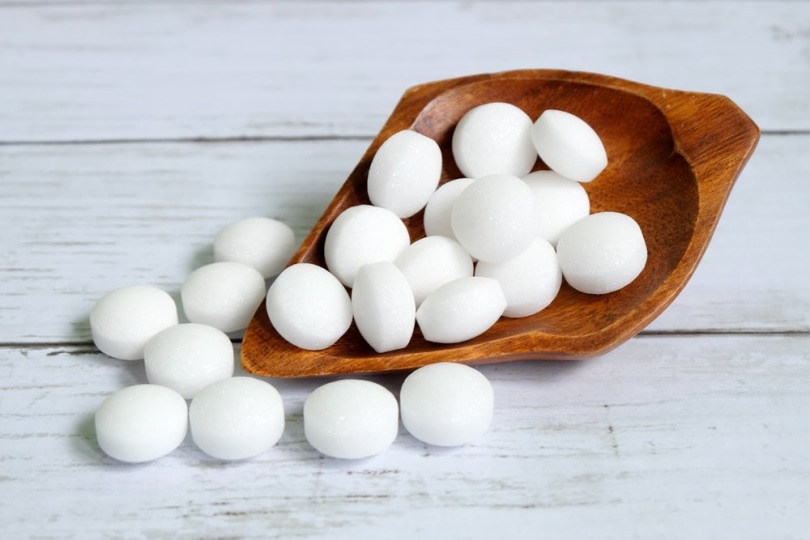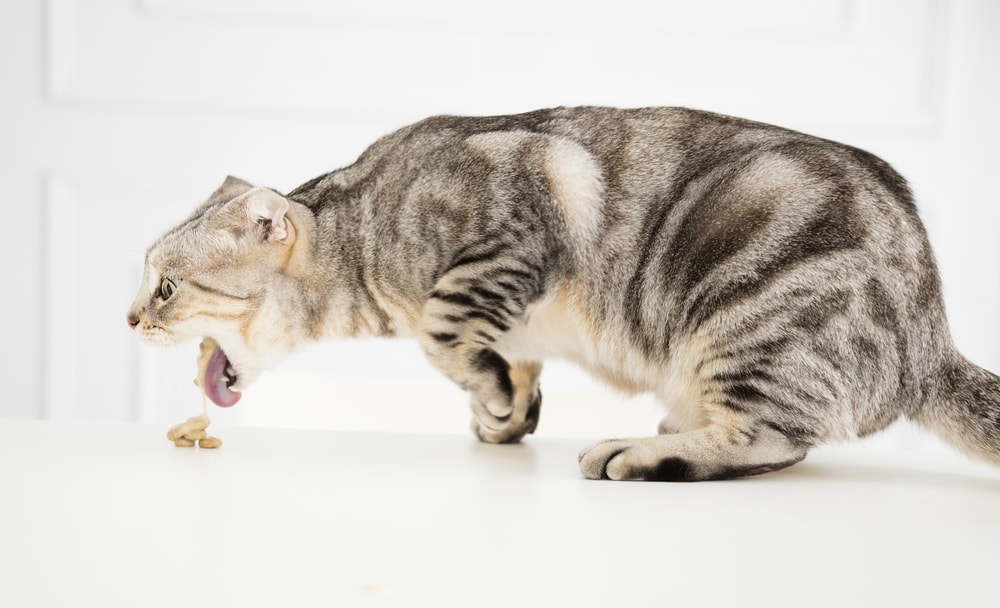
As cuddly as they are while indoors, cats are a massive outdoor nuisance when they provoke pets, spread disease, or use backyards and gardens as their potties and playpens. Given their agility, many frustrated homeowners rely on scent-based deterrents to keep feral felines away. Mothballs are popular odorous pest repellents, but although they may sometimes be effective, the health risks make them a poor solution.
Cats have a sense of smell roughly 14 times more powerful than ours, so it makes sense to use it against them if you want to keep them off your property. Let’s explore if you can use mothballs to keep cats away and the implications for you, your pets, and the local wildlife.
Can I Keep Cats Away With Mothballs?
Mothballs are solid pesticide products that slowly emit chemical vapors to prevent mildew and repel or kill moths and their larva, alongside other assorted insect pests. Most products use either naphthalene from coal tar or crude oil or the more modern paradichlorobenzene (PDCB), a chlorinated hydrocarbon fumigant.
Mothballs are not designed for anything other than moths and fiber pests. While they will repel some cats, others may become more curious and investigate the smell. Being close enough to inhale the chemical vapors is harmful enough for cats, but mothballs become even more dangerous if the cat ingests them.
Many people use mothballs for DIY pest control against rats, snakes, and squirrels, but although some may have certain levels of success, you should never apply mothballs to repel anything beyond what the label states, including cats. And using mothballs solely for moth control in sealed environments is more than a recommendation; it’s a federal law.

Hazards of Mothballs
Mothballs can be hazardous to people, pets, plants, and wildlife. Adults risk exposure primarily to vapors, but small children and pets may mistake the round balls for candies or treats and ingest them. The chemicals break down slowly in the body over several days, with byproducts excreted in the urine, sometimes discoloring it.
Naphthalene mothballs are the more toxic variety. It can take less than one to cause severe toxicity in children, while up to one PDCB ball may be tolerable with milder effects. In either case, exposure can cause a variety of gastrointestinal and neurological symptoms, including:
In severe cases, ingestion can lead to seizures or coma. Liver or kidney damage may develop. Naphthalene can cause hemolytic anemia, a condition in which the breakdown of red blood cells inhibits oxygen from traveling through the body.
Mothball Hazards to Cats
Dogs and cats are no less susceptible than children to adverse health effects from mothballs. No matter the type, pets typically experience the following symptoms from ingestion:
Liver and kidney changes can also occur, as can cataracts and hemolytic anemia, particularly from naphthalene mothballs. Contacting a vet or pet poison helpline is critical if a cat has eaten a mothball. Your vet may induce vomiting, an effective fix for dogs and cats. They may then follow up with activated charcoal to adsorb the slow-dissolving chemicals before they have a chance to infiltrate the GI tract.

Environmental Hazards
Naphthalene and PDCB can enter groundwater, soil, and local water sources. Though it typically breaks down quickly from microbial decomposition, it can bind with soil and affect nearby plant life. It generally has less than a day-long half-life in air, but that jumps to 80+ days when it’s in soil. Aquatic specimens may experience moderately toxic effects.
PDCB, while less toxic, hangs around in the environment for much longer than naphthalene. It has an approximately 31-day half-life in the air; in soil, its half-life can extend up to 8 months. Though both mothball types are unlikely to cause significant harm if you use them for random pest control, they aren’t ideal for keeping around desirable plants. At the same time, you don’t want wildlife to ingest mothballs by accident and fall ill or die.
How Can I Keep Cats Away?
Mothballs may be out of the question, but that doesn’t mean there aren’t plenty of non-toxic DIY cat repellents that can yield positive results. The following are some of the most accessible and easy-to-use options:
Applying these deterrents around targeted cat hotspots, perimeters, and perches can help keep cats away. The drawback is the frequent reapplications, especially after heavy wind and weather.
Instead of using a temporary deterrent, you can use motion-activated devices for hands-free cat repellency. Sprinklers are beneficial options, magnifying the classic spray bottle approach to dissuading a misbehaving cat. Ultrasonic devices have also shown substantial effectiveness in separate studies, one showing a 32% decrease in activity during an experiment and another showing a 46% reduction in incursions.
You can also install physical deterrents like skat mats. They have blunt rubber spikes that do not harm felines but make sitting on a windowsill or garden area uncomfortable.

Conclusion
Mothballs aren’t a viable solution for keeping cats away, nor any furry pest, for that matter. The risks are too high, while the payoff is too little, making them an all-around impractical consideration. Instead, work with your neighbors and employ any of the several convenient and safer options to keep stray and feral cats from wreaking havoc on your property.
Featured Image Credit: Faizal Ramli, Shutterstock







